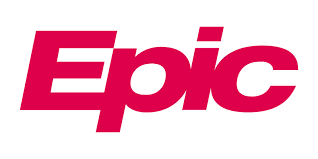What is TEFCA?

In the simplest terms, the Trusted Exchange Framework and Common Agreement (TEFCA) is a collection of guidelines, frameworks, and policies for healthcare data exchange. Its mission is to connect healthcare information networks (HINs) in environments like hospitals and clinics so those networks can share electronic health records (EHRs) with each other — a concept known as TEFCA interoperability.
When HINs connect — and become a “network of networks” — healthcare providers can build consensus through public-private and public-public partnerships and develop a trusted exchange framework for healthcare data.
The Trusted Exchange Framework, the first part of TEFCA, is a series of seven non-binding foundational principles for exchanging information between HINs:
- Principle 1 — Standardization
- Principle 2 — Openness and Transparency
- Principle 3 — Cooperation and Non-Discrimination
- Principle 4 — Privacy, Security, and Safety
- Principle 5 — Access
- Principle 6 — Equity
- Principle 7 — Public Health
The Common Agreement, the second part of TEFCA, is a legal agreement that governs the sharing of data between signatories such as HINs. It includes the Qualified Health Information Network Technical Framework and all standard operating procedures (SOPs).
How does TEFCA interoperability work?

- How do participants in TEFCA interact?
- The U.S. Department of Health and Human Services’ Office of the National Coordinator for Health Information Technology (ONC) entered into the Cooperative Agreement with the Recognized Coordinating Entity (RCE) — the Sequoia Project, an independent private organization that specializes in healthcare information exchange — to develop, implement, manage, and update the Common Agreement.
- The Sequoia Project will also enter into the Common Agreement with Qualified Health Information Networks (QHINs) — entities with the skills and technologies to connect HINs across the country. Together, The Sequoia Project and QHINS will impose the requirements of the Common Agreement and regulate those requirements in the future.
- QHINs connect directly to each other to execute nationwide TEFCA interoperability via QHIN-to-QHIN exchange.
- Each QHIN connects with participants. Participants connect with “Subparticipants.”
- The U.S. Department of Health and Human Services’ Office of the National Coordinator for Health Information Technology (ONC) entered into the Cooperative Agreement with the Recognized Coordinating Entity (RCE) — the Sequoia Project, an independent private organization that specializes in healthcare information exchange — to develop, implement, manage, and update the Common Agreement.
- What information can you exchange with TEFCA interoperability?
- TEFCA “Exchange Purposes” stipulate the reasons for which information you can share or request through a QHIN-to-QHIN exchange:
- Treatment
- Payment
- Health Care Operations
- Public Health
- Government Benefits Determination
- Individual Access Services
- Treatment
- TEFCA “Exchange Purposes” stipulate the reasons for which information you can share or request through a QHIN-to-QHIN exchange:
- TEFCA compliance: What should you do when requesting information?
- Participants and Subparticipants can choose a QHIN based on costs and services. However, QHINs can’t charge other QHINs for the exchange of healthcare information.
- Participants and Subparticipants can share information with all other connected entities regardless of the QHIN they work with.
- A QHIN-to-QHIN exchange will transmit TEFCA requests, which will comply with the requirements of the Common Agreement. The Common Agreement includes “flow-down” clauses for a QHIN’s agreements with its participants and each participant’s agreements with its Subparticipants. Required flow-downs will address:
- Cooperation and Non-Discrimination
- Confidentiality
- Uses, Disclosures, and Responses
- Individual Access Services
- Privacy
- Security
- Special Legal Requirements
- TEFCA Information Outside the U.S.
- Other General Obligations
- Cooperation and Non-Discrimination
- Participants and Subparticipants can choose a QHIN based on costs and services. However, QHINs can’t charge other QHINs for the exchange of healthcare information.
How does everyone benefit from TEFCA compliance?

- TEFCA compliance facilitates the exchange of healthcare information on a nationwide scale, simplifies connectivity among HINs, and creates efficiency by standardizing exchange policies and technical frameworks.
- Utilizing the RCE Directory Service allows QHINs, participants, and Subparticipants to share directory information associated with other QHINs, participants, and Subparticipants.
- With TEFCA compliance, HINs can:
- Enable or facilitate access to healthcare information from participants outside their existing community more easily and efficiently.
- Connect with a broader scope of actors outside of their own networks.
- Minimize one-off connections, greatly reducing the burden and complexity of exchange.
- Create a more efficient flow of data that allows HINs to focus more on value-add services and innovative business lines.
- Enable or facilitate access to healthcare information from participants outside their existing community more easily and efficiently.
- Patients can:
- Reduce the need for duplicative and costly tests.
- Move throughout the U.S. and change providers much more easily.
- Answer fewer questions when seeking urgent or emergency care.
- Ensure the information insurers need is readily available when requesting prior approval for treatment or second opinions.
- Reduce the need for duplicative and costly tests.
- Providers can:
- Become more confident when sending and receiving healthcare information across a national HIN.
- Access more complete records, make smarter decisions, and enhance care coordination.
- Implement bi-directional exchanges with public health agencies, making it easier to report to multiple jurisdictions and across state lines.
- Become more confident when sending and receiving healthcare information across a national HIN.
- State governments and public health agencies can:
- Improve population data.
- Decrease the need to build one-off connections to public health reporting systems.
- Reduce the problems associated with onboarding providers.
- Improve population data.
- Health plans and payers can:
- Gain a 360-degree view of an enrollee’s medical history, supporting the healthcare sector’s shift toward value-based care.
- Identify and close gaps in care and provide case management services to enrollees requiring additional care.
- Gain a 360-degree view of an enrollee’s medical history, supporting the healthcare sector’s shift toward value-based care.

Notable companies planning to become QHINs

- Epic: The EHR giant known for its Care Everywhere platform exchanges 10 million patient charts every day.
- NextGen Healthcare: This interoperability vendor supports more than 100,000 providers with its ambulatory EHR and practice management solutions. It also provides one-third of HIEs with interoperability tools.
- eHealth Exchange: A nationwide healthcare information network.
- CommonWell Health Alliance: A large national network specializing in healthcare data exchange.
How will TEFCA improve interoperability?
- TEFCA released the TEFCA FHIR Roadmap — a three-year plan that outlines how TEFCA will accelerate FHIR adoption throughout the healthcare industry.
Exploring how TEFCA will impact your organization? KMS Healthcare has expert resources that can help navigate the nuances of emerging interoperability standards and implement solutions to your healthcare technology challenges. Click here to find out more about how you can leverage our team of experienced engineering resources.